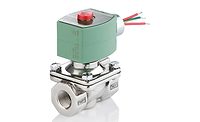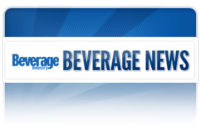Lubricants typically make up only about 1% of the average company’s total operating costs. But this relatively small amount can earn a tremendous return for your company’s bottom line. The surprising truth is that the lubricants a company chooses can have a significant impact on high-visibility and high-value line items such as energy, labor and equipment costs. This is especially true in the food and beverage industry, where the standards and best practices for properly lubricating machinery can be stringent, and where efficient and cost-effective lubrication must be accomplished while minimizing the risk of potential product contamination and recall. Making the right lubrication choices can help ensure that your plant operates with maximum safety, efficiency and yes, profitability.
Before discussing the ways in which proper lubrication can help you, let’s consider the difference between lubricant program “prices” and “costs.” Identifying the true overall cost of your lubricant program is the first step in optimizing your plant’s efficiency and its impact on your bottom line. When analyzing your current lubrication program consider how much lubricant you’re using, how often you relubricate, and how much time that relubrication takes. If you already have a handle on these numbers you’re well ahead of the game. If you don’t, take some time to establish a baseline so that when considering alternative products you can conduct an “apples to apples” comparison. By tracking these variables you will come to realize that the true cost of your program includes much more than the price per kilo or price per liter of your lubricants. Once you have a grasp on the true cost of your company’s lubrication program, the next step is to evaluate the best ways to maximize value and costeffectiveness. Here are some key ways in which the choices of lubrication programs can really make a difference in your plant.
Meeting unique food and beverage regulations
Food-grade, food-plant, NSF certified, FDA listed, USDA registered — the list of lubricant terms seems to go on and on. Trying to sift through the terminology, standards and best practices for properly lubricating machines can be overwhelming for facility managers. However, correctly lubricating equipment is essential to any operation’s success. Choosing and implementing the right lubrication program will ensure that a plant operates more safely and efficiently, in addition to making it more profitable. Most importantly of all, choosing the right lubricant will help ensure that your plant meets lubrication standards unique to the food and beverage industry.
Products designed for use in food and beverage facilities must do all the things that a conventional industrial lubricant does (i.e. meet general technical requirements that include the ability to reduce friction and wear, protect against corrosion, dissipate heat and have a sealing effect) while complying with food regulations. That means lubricants that are physiologically inert, tasteless, odorless and approved by various international standards.
Products for this industry are often referred to as food-grade, but it is important to note that only H1 lubricants are truly “food-grade.” Lubricants for the food and beverage industry are reviewed by NSF International (NSF), an independent registration body, and registered as either H1 or H2.
H1 lubricants are suitable for incidental, technically unavoidable contact with a food product. These lubricants may be safely used for handling, canning, bottling, blending, chilling, cooking, cutting, slicing and peeling, on machinery components, such as pumps, mixers, gearboxes, chain drives and conveyor belts. H1 lubricants may be used above the line.
NSF H2 lubricants, on the other hand, are suitable for use in the foodprocessing, beverage and pharmaceutical industries, provided that contact with the food product is absolutely impossible. These products are sometimes referred to as food-plant or food-machinery lubricants and may be used below the line. The distinction between these two designations is especially critical when dealing with issues of contamination and potential product recall.
Contrary to many plant managers’ beliefs, one must no longer sacrifice performance in order to meet H1 standards. Advances in the industry now allow H1 lubricants to deliver similar or better performance than conventional industrial oils. For example, the Klübersynth® UH1 6 Series of H1 lubricants offers superior efficiency, operational reliability and useful life. In some cases, gearbox manufacturers actually use this product for their first-fill even when the box is not intended for use in a food or beverage facility.
Interestingly, not all food and beverage plants are required to use H1 or H2 products. However, these become the unofficial industry standards, and many organizations have made it their corporate policy to use H1 and H2 lubricants as a safety precaution. By going a step further and using only H1 products across the board, companies can further minimize their risk. Even if a component should fail while running an H1 lubricant, this is still preferable to facing product contamination and/or recall.
Please keep in mind, even H1 lubricants have a safety threshold they cannot exceed: 10 ppm (parts per million) is the upper limit to be considered harmless if consumed, according to NSF International standards (the NSF adopted the procedures that, prior to 1998, were used by the USDA to register and list new H1 and H2 lubricants). Products that comply with these guidelines are listed in the NSF White Book™ Listing for proprietary substances and nonfood compounds.
A new standard, ISO 21649, may be the next step in lubricant manufacturer regulations; its scope covers lubricants used in the food, food processing, cosmetic, pharmaceutical and animal feed industries. Until now, a lubricant’s recipe and its intended use were the only items that were reviewed and regulated. However, ISO 21649 — Safety of machinery — Lubricants with incidental product contact — Hygiene requirements Certification Program, is much more comprehensive. It specifies hygiene requirements for the formulation, manufacture, use and handling of lubricants that might come into contact with products during manufacturing or processing. The product certification process would involve formulation and label review, auditing, risk assessment and optional product testing by NSF, which has volunteered to be a regulating body if ISO 21649 becomes the new standard.
To help avoid regulatory confusion and keep plant managers abreast of new information, some lubricant manufacturers have developed training seminars for OEMs and end users. For example, Klüber Lubrication educates its customers on an individual basis through its Klüber Lubrication Asset Support Service (KLASS). This integrated program includes lubricants, service and customer support as well as education, to help customers meet high standards as well as increase efficiency, reduce operating costs and support existing continuous improvement initiatives.
By learning more about food-grade lubricants and the lubrication industry’s regulatory bodies and standards, facility managers will have a better idea about what lubricant to select, the safety practices that should be put into place and the best lubricant practices to follow in order to save money and energy. Moreover, adopting an “all-H1” lubrication program throughout the plant will help limit your risk of contamination problems, while delivering the same or better performance than conventional industrial oils.
Boosting productivity
How much can lubrication programs help facilities that are constantly pushed to increase productivity while reducing maintenance and operating expenses? The answer is: to a surprisingly large extent. That’s because of the obvious fact that lubricants don’t last forever; they need to be replenished at regular intervals in order to properly protect your equipment. And anytime your equipment is idle, you’re losing productivity.
While some maintenance, including lubrication, can be completed while your line is in operation, some also has to be conducted during downtime. This a relatively minor inconvenience if you have regularly scheduled downtime that coincides with your relubrication schedule. However, if you have to bring a machine down once a shift specifically to relubricate, that’s money taken away from the bottom line every shift. And even regularly scheduled downtime could be reduced if relubrication were required less often. What if you were using a lubricant that extended that relubrication interval to once a month?
Consider, for example, a manufacturing facility in the food and beverage industry running nine lines, with a total operating time of 8,000 hours per year. Their current bearing lubricant requires re-lubing once a week. By using a specialty synthetic lubricant, their relubrication interval could be extended to once a month. This not only saves time but also reduces consumption. In turn, reducing lubricant consumption also means reducing lubricant disposal, an item that’s become more expensive in recent years because of environmental concerns. All told, the slightly greater initial expense associated with the specialty lubricant will probably be outweighed by long-term savings, productivity gains and reduced overall cost of ownership.
Doing more with less (less relubrication, that is)
If your plant is like most, there is probably a “wish” list of maintenance projects just waiting for the manpower and time to get them done. Adding manpower to perform these tasks usually isn’t an option. Already, one of the single largest line items in a facility’s budget is personnel costs. Relubricating your machinery isn’t an option, either. It’s a requirement. Sooner or later, it has to be done, and it requires a certain amount of your workforce’s time.
While even the best lubricant can’t create extra time, an optimized lubrication program can help free up manpower resources to accomplish maintenance projects and other tasks that are difficult to find time for now. If your lubrication specialist is able to extend relubrication intervals through the use of synthetic, newer-generation products, you can do more with the same staff and the same time. That time, of course, can be reallocated from the relubrication schedule to other tasks at your discretion. In one case study, a facility that switched to a longer-lasting specialty lubricant had the potential to reallocate almost 1,500 man-hours annually. Just imagine what could be accomplished in that time!
You can also get more production with less, too, while continuing appropriate maintenance of your equipment, a major investment that must be protected. Proper lubrication can help your machinery and its components last longer, which means less repairing, less rebuilding, less need for specialized personnel and lower costs. Your spare parts inventory could be another example of doing more with less if your lubrication program extends equipment life so you can afford to carry fewer spare parts.
Saving energy
One key factor many companies fail to consider is how much energy a company can save by utilizing highly efficient gear oils. The right lubricant can reduce the coefficient of friction, resulting in less power loss and more efficient operation. In other words, the right lubricant equals less energy, leaving you with a lower energy bill at the end of the month. All of which serves your bottom line. It’s more environmentally sound, too.
Separating cost from price
The best way to avoid the potential pitfalls of purchasing lubricants based solely on price is to evaluate your current program and then request a comparative cost benefit analysis from a knowledgeable supplier. Simple calculations can reveal significant savings that aren’t always evident in the initial cost of a lubricant.
A quality lubricant supplier should be able to provide you with such information as a cost-benefit analysis, estimates of energy savings, documentation of all relevant food and beverage regulations (e.g., H1 or H2 registration), and additional services that help you keep your facility running as efficiently as possible. An internal auditing system that measures your current lubricant consumption, relubrication intervals and the associated costs of your lubricant program is the first step in creating a lubrication system that will work for your facility. Take advantage of the technical and operational expertise available from your lubrication specialist.
For more information about food-grade lubricants and best practices, visit www.klubersolutions.com.


